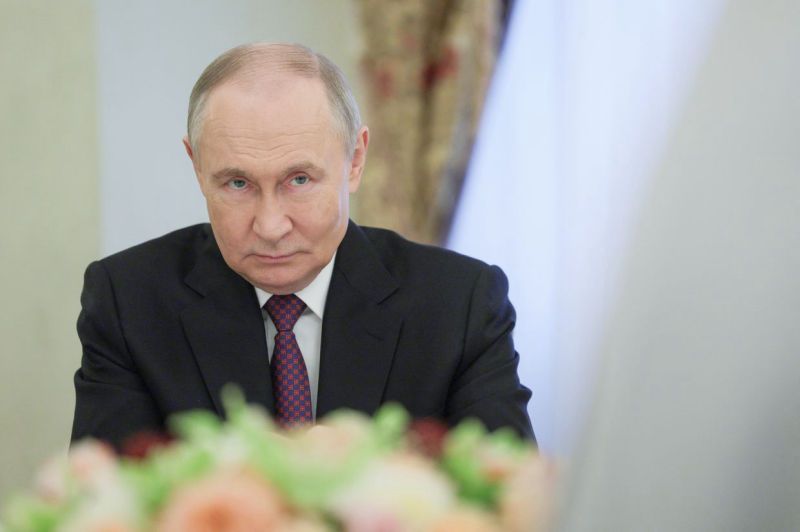BenB 🇺🇦
@benborges.xyz
6.1K followers
3.1K following
38K posts
Sharing the latest of the 🇷🇺 War against Ukraine 🇺🇦 @osintukraine.com
About me : https://benborges.xyz/about/
Matrix : @benb:osintukraine.com
Signal : benb.41
Ukraine War Telegram Archive ⤵️
⚠️🔞 https://bsky.app/profile/benborges.xyz/post/3jzwf4scubc2y
Posts
Media
Videos
Starter Packs
BenB 🇺🇦
@benborges.xyz
· 4h
Poland seeks to block the extradition to Germany of suspect in the Nord Stream blasts
Polish Prime Minister Donald Tusk said his government has a clear position on the Nord Stream sabotage case, speaking at a joint press conference with Lithuanian Prime Minister Inga Ruginiene.
“It’s not my job to find out why a Ukrainian citizen returned to Poland despite knowing about a European arrest warrant, but our position hasn’t changed. It is certainly not in the interests of Poles to accuse or hand this citizen over to another state. The decision will be up to the court,” Tusk said .
Tusk also argued the problem with Nord Stream 2 wasn’t that it was blown up, but that it was built with European money—something he said played a key role in Europe’s dependence on Russian energy.
On Polsat News, National Security Council head Slawomir Cenckiewicz backed Tusk’s stance on the extradition of Volodymyr Zhuravlyov. “Officially I’ll say this: Poland should not lend a hand to any operation to hand over a person who harmed Russia. We need to find a formula that keeps us within the law and at the same time doesn’t hand over to the Germans or the Russians someone who damaged the Russian war machine.”
On October 7, as a hearing in Zhuravlyov’s case was underway, supporters rallied outside the courthouse. Some demonstrators shouted anti-government slogans, criticizing Tusk for an allegedly pro-German stance and Germany for backing energy ties with Russia.
In late September 2022, a series of explosions damaged the Nord Stream and Nord Stream 2 gas pipelines. The blasts were recorded near Denmark’s Bornholm Island in the Baltic Sea. Soon after, four leaks were detected on three of the four pipeline strings.
German investigators say seven Ukrainian citizens took part in the attack: four divers, an explosives expert, the captain of the yacht Andromeda and the team leader, Serhiy K., who was later detained in Italy.
In September 2025, Russian presidential aide and head of the Maritime Board Nikolai Patrushev criticized the German version of events and suggested the blasts were carried out by representatives of NATO special services.
www.uawire.org
BenB 🇺🇦
@benborges.xyz
· 5h
Explosion derails Russian military cargo train on St. Petersburg–Pskov line
In Russia’s Leningrad region, a locomotive hauling military cargo derailed after an explosion damaged the tracks, halting traffic on the St. Petersburg–Pskov line.
The blast occurred Tuesday morning, October 7, on the Strogonovo–Mshinskaya stretch of track. The explosion forced a locomotive and several cars transporting military cargo off the rails, reported Ukrainian outlet Ukrainska Pravda.
A source in Ukraine’s Defense Intelligence Directorate said the operation was carried out by partisans. According to the source, “as a result of a successful special operation, rail traffic on the St. Petersburg–Pskov corridor was paralyzed.”
Russian Railways confirmed that service on the line has been suspended, citing “technical reasons.” The company said passenger and freight trains are being rerouted, leading to delays of several hours.
Open-source reports indicate Russian security services are working at the site to clear overturned cars and restore service. No photos or videos from the scene have been published so far. According to Ukrainian intelligence, internet access has been cut off and mobile service restricted in the area, with the perimeter controlled by security forces.
The incident highlights the vulnerability of Russia’s military logistics far from the front lines. The derailment of a train carrying military cargo is the latest strike on internal infrastructure supporting the Russian military.
www.uawire.org
BenB 🇺🇦
@benborges.xyz
· 6h
China halts high-precision machine tool exports to Russia as trade ties cool
Beijing has tightened export rules, depriving Russia of access to machine tools with 3–4 micron precision. Russian businesses are warning of ruptured production chains.
China has strengthened export controls and effectively halted shipments to Russia of high-precision equipment that requires special licenses. In the metalworking market, some are calling it “the beginning of technological isolation” for Russia.
The cutoff was flagged by Ildar Nuriev, owner of the company Tatpromstan, whose remarks were cited by Russian media.
He said the Chinese side has restricted deliveries of high-tech equipment even though there has been no official announcement. Where previously it was relatively easy to obtain machines with 3–4 micron accuracy, that’s no longer the case. A separate export license is now required, and securing one is an extremely complex and lengthy process.
According to him, even transporting equipment that has already been paid for from China to Russia now involves “unpleasant incidents” — from customs delays to sudden inspections by Beijing’s regulators.
Meanwhile, Russia remains heavily dependent on imported machine tools. In 2024, foreign-made machines accounted for 98.3% of units procured for production. About 71% of the value of imported equipment came from China, wrote Artem Garin, deputy director for quality at StankoMashKompleks JSC, in the magazine Progressive Economy.
Tatpromstan specializes in localizing and adapting Chinese machine tools for the Russian market. For that reason, Nuriev sees the new restrictions not as a coincidence but as a signal of Beijing’s changing attitude toward technological cooperation with Moscow.
According to Nuriev, it’s a clear sign China is not interested in deepening production ties with Russia, seeking instead to reduce sanctions risk.
The tighter export rules come as bilateral trade slows. According to China’s General Administration of Customs, Chinese exports to Russia fell 16.4% in August 2025 from a year earlier — nearly double July’s decline (-8.6%).
Overall, in the first eight months of this year, two-way trade dropped 8.9% to 1.03 trillion yuan (about $145 billion).
Experts at the Gaidar Institute note that China is cutting purchases across nearly all key categories of Russian raw materials.
For January–May 2025:
- Oil supplies fell 11%
- Petroleum products — 28%
- Liquefied natural gas — 13%
- Timber and coal — roughly 10%
Analysts say the trend points to a structural cooling in trade rather than temporary fluctuations. Beijing is diversifying suppliers to avoid dependence on Russia while minimizing the risk of secondary sanctions.
www.uawire.org
BenB 🇺🇦
@benborges.xyz
· 6h
Would Tomahawks be a game-changer for Ukraine?
Since September, talk has been growing about whether the U.S. might finally supply Ukraine with the long-requested Tomahawk cruise missiles — and on Oct. 6, Donald Trump said he had "kind of made the decision."
"I think I want to find out what they're doing with them, where they're sending them, I guess. I have to ask that question," Trump told reporters in the Oval Office.
The Tomahawk is a subsonic, long-range cruise missile designed for precision strikes against land targets. It has an oper
kyivindependent.com
BenB 🇺🇦
@benborges.xyz
· 7h
Ukraine makes gains on the Pokrovsk and Novopavlivka sectors, stabilizing the front with counterattacks
Ukrainian forces (AFU) have notched notable gains on the Pokrovsk and Novopavlivka sectors. The AFU carried out successful counterattacks and stabilized their lines.
Ukrainian troops achieved visible progress along the front: in the Pokrovsk sector, they have isolated elements of Russian forces, while in the Novopavlivka sector they moved to counterattacks and stabilization, according to military expert Oleksandr Kovalenko .
Kovalenko stressed that despite a Russian troop buildup of up to 130,000 personnel on the Pokrovsk axis, Moscow has not made significant advances. Instead, Ukrainian forces have created a “kill zone” - a corridor where resupply and withdrawal for Russian units is extremely risky.
Units attempting to attack Krasnyi Lyman and Rodynske already risk encirclement. Efforts to push through Maiak, Nikanorivka or Popov Yar are meeting counterattacking pressure. The noose is tightening: some Russian units are becoming isolated and are being contained by Ukrainian defenses.
In this area, the expert notes a key shift: Ukraine’s Defense Forces are not only holding the line but have executed successful counterattacks. Around Sosnivka, Yanvarske and Novoselivka, the front has stabilized and the Russians have been pushed back.
Kovalenko points out that although Novopavlivka was often considered the hottest sector in 2025, Russian offensive efforts there are beginning to stall. Attempts to reach the north bank of the Vovcha River and entrench near Ivanivka have not delivered meaningful gains. Stabilization here is more than holding firm - it signals Ukraine can respond to attacks and deny the Russians the initiative.
Military analysts say these advances carry strategic weight: a sector where Russia concentrated major forces has stabilized for the first time in a long period. That creates a window for Ukraine to regroup, reinforce and prepare to apply pressure where the enemy is weaker.
The expert argues that local but steady successes can shift the broader dynamics along the front: “The Russians have spread their resources thin and can’t maintain offensive tempo. This isn’t an instant break, but a durable one.”
www.uawire.org












